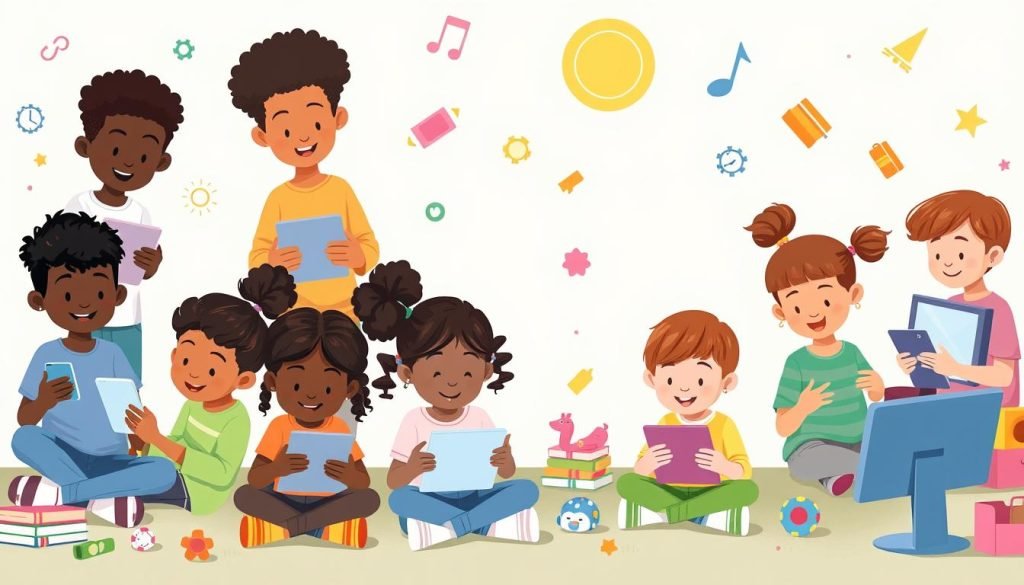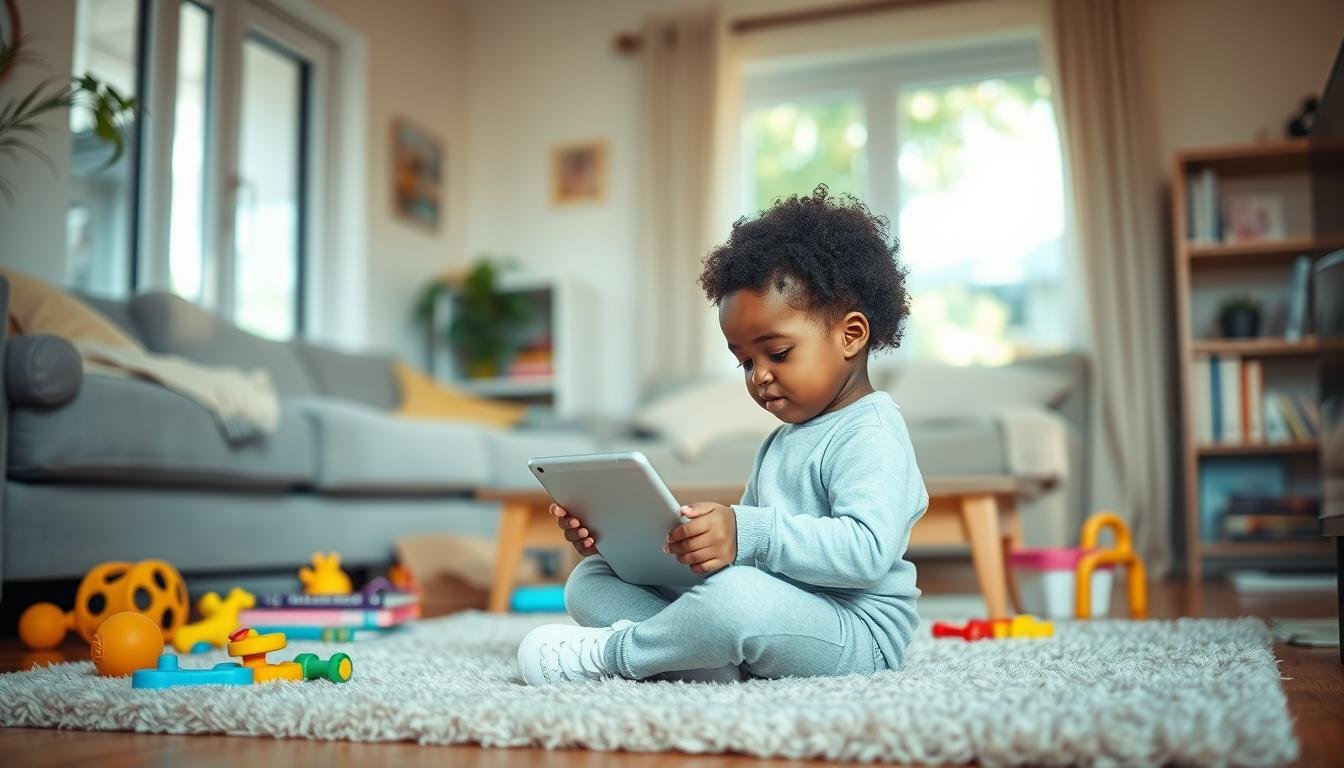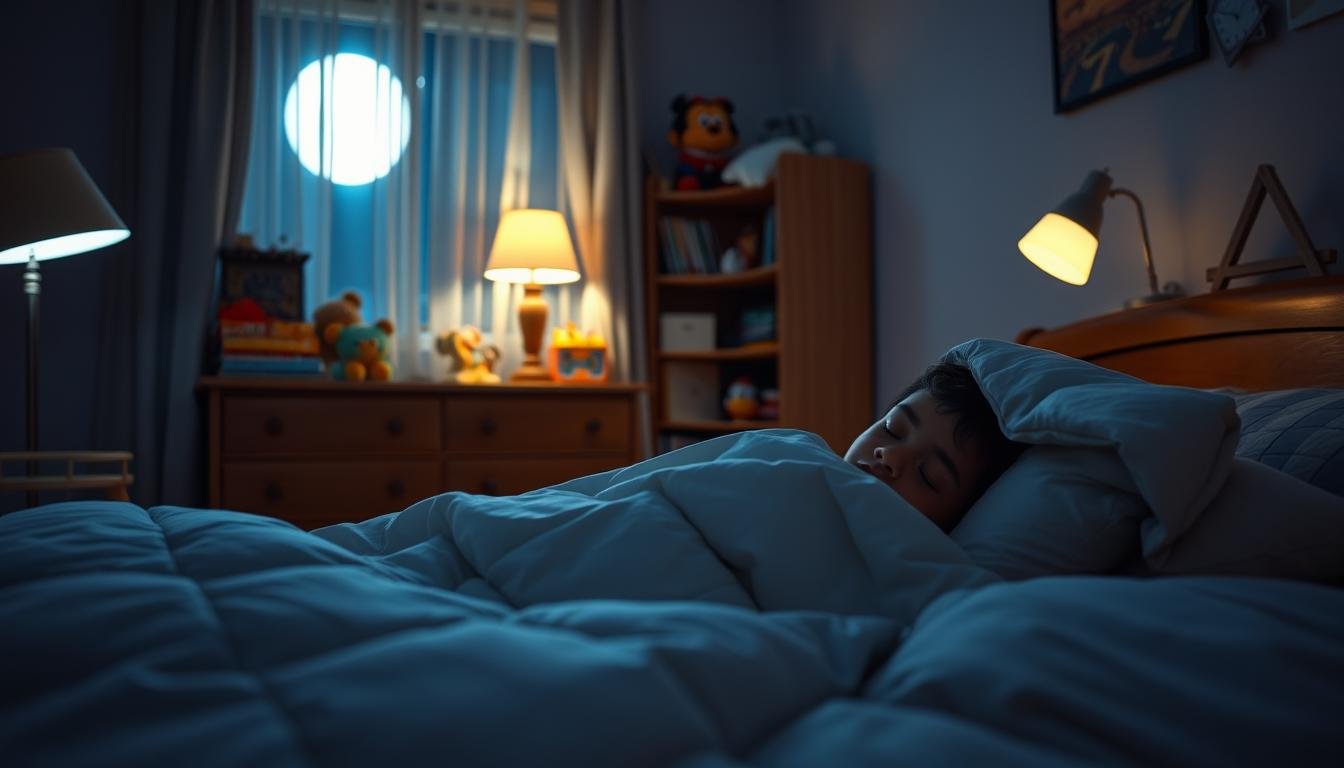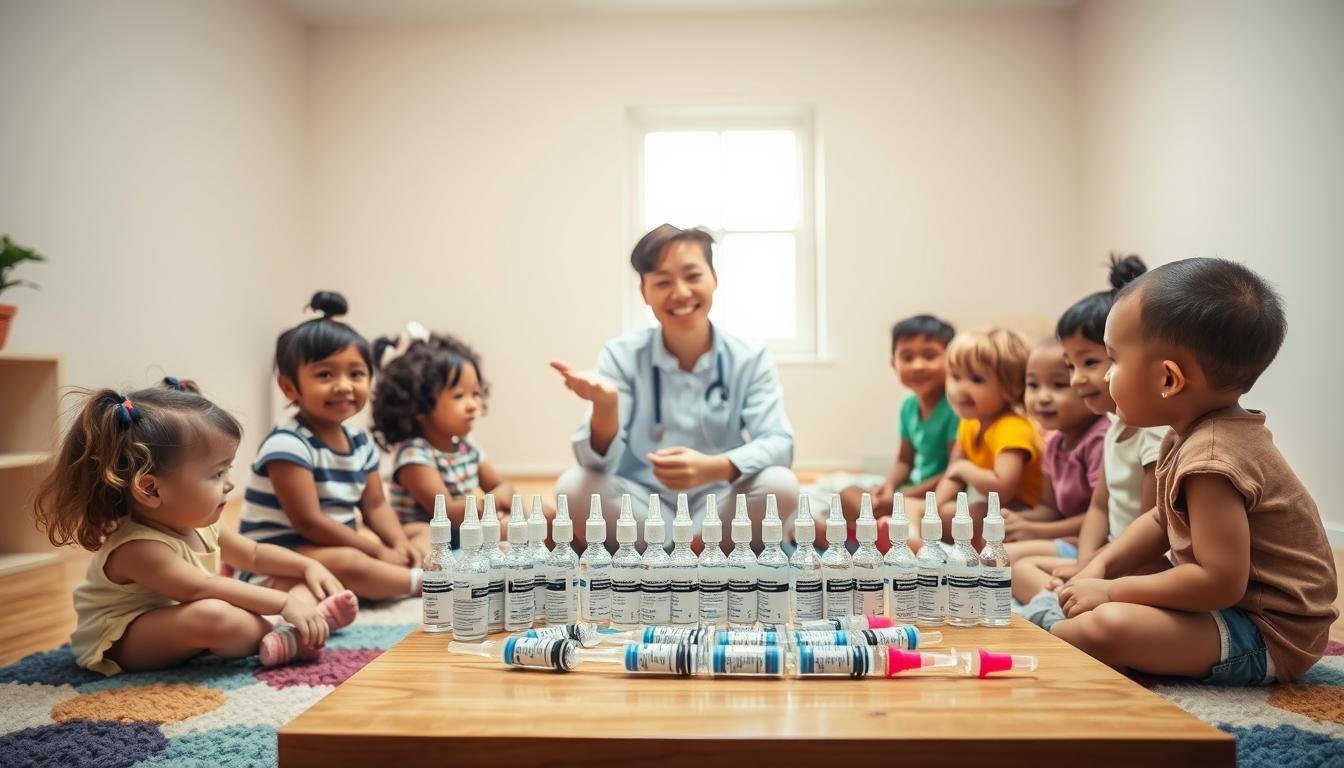Remember the first time you gave your toddler a tablet on a long car ride? It was quiet, but you worried. Were you trading her language skills for peace? This is a common worry for parents today. Screens are everywhere in our kids’ lives now. Toddlers spend almost three hours a day staring at screens. This raises a big question: what’s the cost to their communication skills?
Studies show a worrying trend. Toddlers hear 7 fewer adult words and speak 5 fewer words for every minute of screen time. This means they miss out on 1,100 adult words, 840 vocalizations, and 194 conversations daily. For a three-year-old, this is a huge loss, especially when they should hear 5,000 to 35,000 words a day. Screen time’s effect on language development is especially bad for kids under two. The World Health Organization and Australian guidelines say no screen time for this age. But, many of us let our kids watch more, hoping to prepare them for a tech world.
Understanding how screen time affects our kids’ speech is key. We need to find a balance between technology and helping our children grow their language skills in today’s digital world.
Understanding the Critical Window of Speech Development
Early childhood is key for learning language. The brain is very open to making connections for talking during this time. Studies show that babies with caring parents learn more words and hit language goals sooner. Back-and-forth talks between kids and adults are very important. These chats help grow brain paths for language. Every face-to-face moment helps build a child’s language skills.
Joint attention is a big help in learning new words. Kids who focus together with others from 8 to 15 months learn faster. Reading the same story over and over helps kids learn new words too.
| Age Group | Recommended Daily Screen Time | Potential Impact on Speech |
|---|---|---|
| Under 2 years | None | Missed opportunities for crucial interactions |
| 2-5 years | 1 hour or less | Reduced face-to-face communication time |
| Over 5 years | 2 hours or less | Decreased practice of verbal skills |
While learning apps can help, too much screen time can hurt talking skills. The American Academy of Pediatrics says to limit screens. This way, kids can have more time for real talks that help their language grow.
How Screen Time May is Silently Impacting Your Child’s Speech
Screen time can greatly affect your child’s speech. Studies show a link between too much screen time and delayed speech in young kids. Dr. Catherine Birken, a staff pediatrician and scientist at The Hospital for Sick Children (SickKids) in Toronto, Canada found that extra 30 minutes of screen time raises the risk of delayed speech by 49%.
Technoference is when screens get in the way of important talks between parents and kids. A study in Australia showed that one minute of screen time cuts down on adult words, child sounds, and conversations by a lot. This can really hurt how well kids learn new words and how they interact with others. Kids aged 36 months who watch screens for 172 minutes a day miss out on:
- 1,139 adult words
- 843 child vocalizations
- 194 conversational turns
Even if kids watch screens for just one hour a day, as the WHO suggests for 3-year-olds, they still miss out on a lot. This includes:
| Missed Interactions | Daily Impact |
|---|---|
| Adult words | 397 |
| Child vocalizations | 294 |
| Conversational turns | 68 |
These results show why it’s key to cut down on screen time. We should focus more on talking face-to-face to help our kids with their language skills.
Screen Time Guidelines by Age Groups
The American Academy of Pediatrics (AAP) has set clear age-appropriate limits for screen time. Their media use policy aims to balance technology’s benefits with potential risks to child development. Let’s break down the AAP recommendations by age group:
| Age Group | Recommended Screen Time | Guidelines |
|---|---|---|
| Under 18 months | No screen time | Except video chatting |
| 18-24 months | Limited | High-quality programs with parental guidance |
| 2-5 years | 1 hour daily | High-quality content, viewed with parents |
| 6 years and older | Consistent limits | Prioritize sleep, exercise, and other healthy behaviors |
Despite these guidelines, many children watch more screen time than recommended. Kids under 2 watch about 49 minutes of digital media daily. Those aged 2-4 watch around 2.5 hours, more than double the suggested limit. Kids 5-8 average just over three hours per day.

Quality content is key when screen time is allowed. Parents should engage in interactive co-viewing, discussing what’s watched to foster language learning. This approach can help mitigate the negative effects of screen time on children’s speech development. For more tips on promoting speech development, check out these speech therapy exercises you can do at.
Remember, these AAP recommendations serve as a guide. Each family should create a personalized media use plan that works for their unique situation while prioritizing face-to-face interactions and outdoor activities.
The Real Impact of Daily Screen Exposure
A study in Australia followed 220 families. It showed how screen time hurts a child’s language. For every extra minute of screen time, three-year-olds hear seven fewer words. They speak five fewer words and have one less conversation. On average, toddlers in the study spent 2 hours and 52 minutes on screens daily. This cuts down on time spent with parents and harms their brain growth. Children miss hearing 1,139 adult words, 843 child words, and 194 conversations every day.
This study shows how vital a rich language environment is for kids. Too much screen time can slow down their communication, fine motor, and problem-solving skills. By age four, these skills are mostly affected.
| Screen Time (Hours) | Risk of Communication Delays | Risk of Problem-Solving Delays |
|---|---|---|
| 1-2 | 1.5x higher | 1.2x higher |
| 2-4 | 2.5x higher | 1.8x higher |
| 4+ | 4.78x higher | 2x higher |
Parents are key in controlling screen time and creating a language-rich home. By reducing screen time and talking more, we help our kids grow their language skills and brain development.
Creating a Healthy Screen Time Balance
Finding the right balance with screen time is crucial for your child’s growth. The American Academy of Pediatrics advises no screens for kids under 18 months, except for video chats. For 2-5 year olds, they suggest no more than an hour daily of quality content. Older kids need consistent limits to ensure screens don’t replace sleep, exercise, or other important activities.
To achieve this balance, try interactive co-viewing. Watch shows together and discuss what you see. This turns passive viewing into an active learning experience. Choose educational content that matches your child’s age and interests.
Apps and games that teach while entertaining can be great choices. Set up device-free zones in your home. Keep screens out of bedrooms and dining areas. This promotes better sleep and family bonding.
Offer plenty of alternative activities. Reading books, playing with toys, outdoor adventures, and creative projects are all great options. These help develop important skills and imagination. Remember, even short periods of undivided attention from you are more valuable than longer stretches of partial focus.
By mindfully balancing screen use with other activities, you’re setting your child up for healthier habits and stronger connections with others.
Conclusion
Finding a balance with screen time is key for our kids’ health in today’s digital world. Too much screen time can harm their speech, social skills, and health. By guiding our kids and setting limits, we can help them grow and communicate better.
Every child is different. Some might need less screen time, while others might need speech therapy. Kids Miracle Steps helps families with these needs, offering expert advice and strategies for better communication in our tech-filled lives.
Let’s focus on talking face-to-face, playing outside, and spending quality time together. This way, we’re not just cutting down on screens. We’re giving our kids the chance to experience the world in a meaningful way. With the right balance and support, our kids can succeed in both the digital and physical worlds, setting them up for a bright future.






